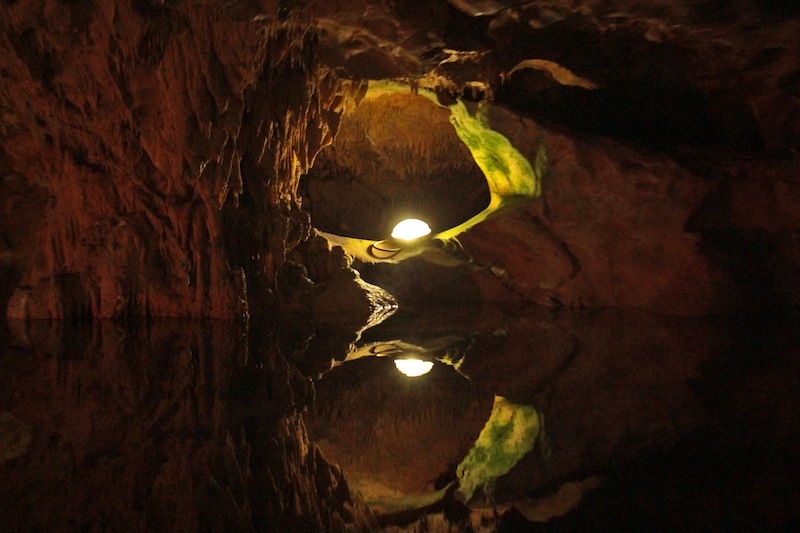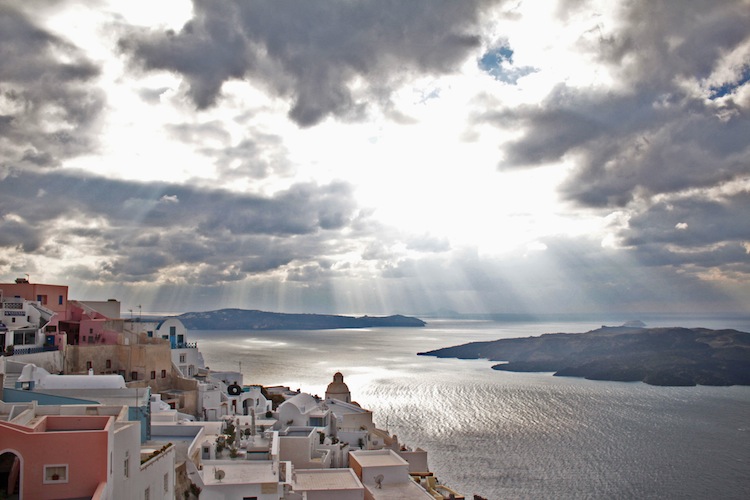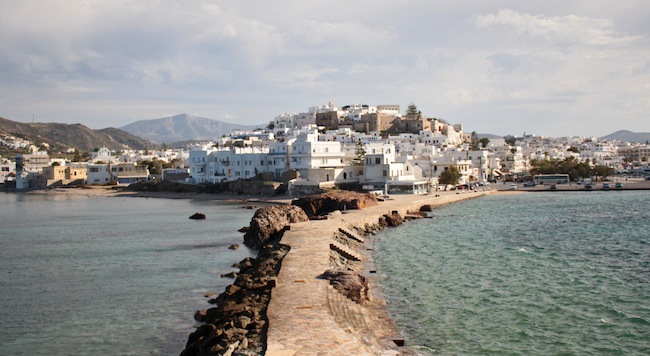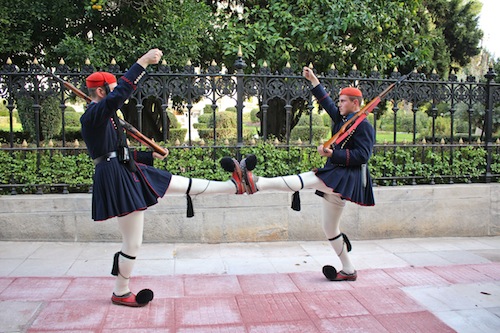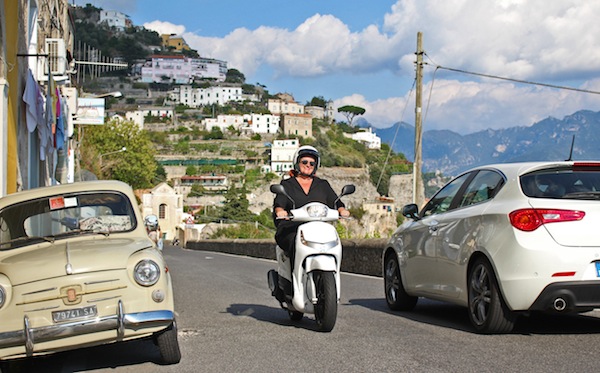The volcano that wiped out an entire civilisation and spawned the legend of Atlantis, has, fortunately for us, left behind the most beautiful curved island, fringing its sunken crater.
Even if you have never heard of Santorini – you will still probably already know it. That photo of Greece in every travel agency, with the blue domed roofs – that’s the one!
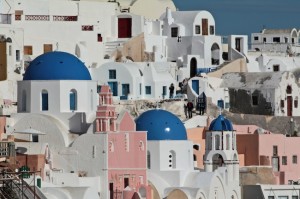
The famous blue domes are in every visitors photo album
But it is much more varied than that image suggests. Part of the Cyclades groups of islands, which includes Naxos, one side of the island is sheer cliff, the other sloping fields. The caldera – the cauldron in the centre – is inky black deep and the cliffs are dizzyingly high, sliced through with red and black layers of rock.
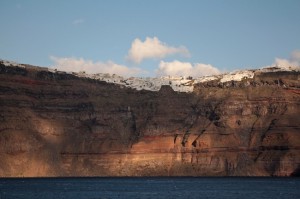
Far above the craters’ waters the towns of Santorini perch along its length
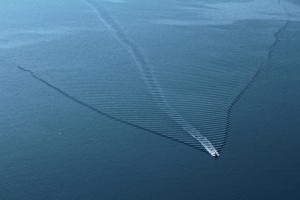
Santorini’s still waters run very deep

Panorama of the Santorini caldera
The tsunami that followed the massive eruption of the Thera volcano in 1200BC wiped out the Minoan race on Crete, hundreds of miles away, as well as causing untold and unrecorded damage across the Mediterranean . The volcano collapsed in on itself, creating the caldera and leaving a craggy lip still pouting out of the water. It was on these rocky outcrops that Santorini was built. This video gives you a graphic idea of Santorini’s creation and destruction.
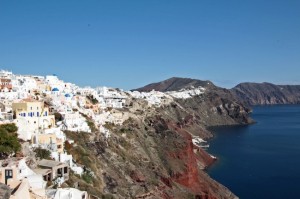
The towns and villages stretch the length of the island’s arc
Many of the traditional ways of working – such as using donkeys to move almost anything and often anyone – have not changed because of the extraordinary geography of the place.
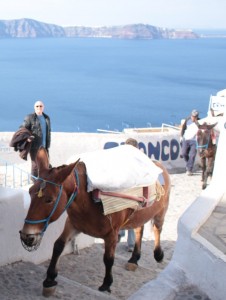
Step aside, donkey coming through
And it even has a tomato museum – a celebration of the tasty Santorini cherry tomato paste which used to be pulped and canned on the island. Now, not many places can boast all that!
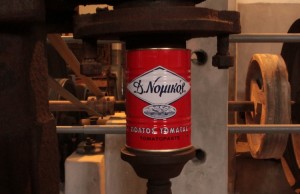
We were surprised at how interesting it was!
But above all else , it is a visual feast – so let us give you a plateful.

































